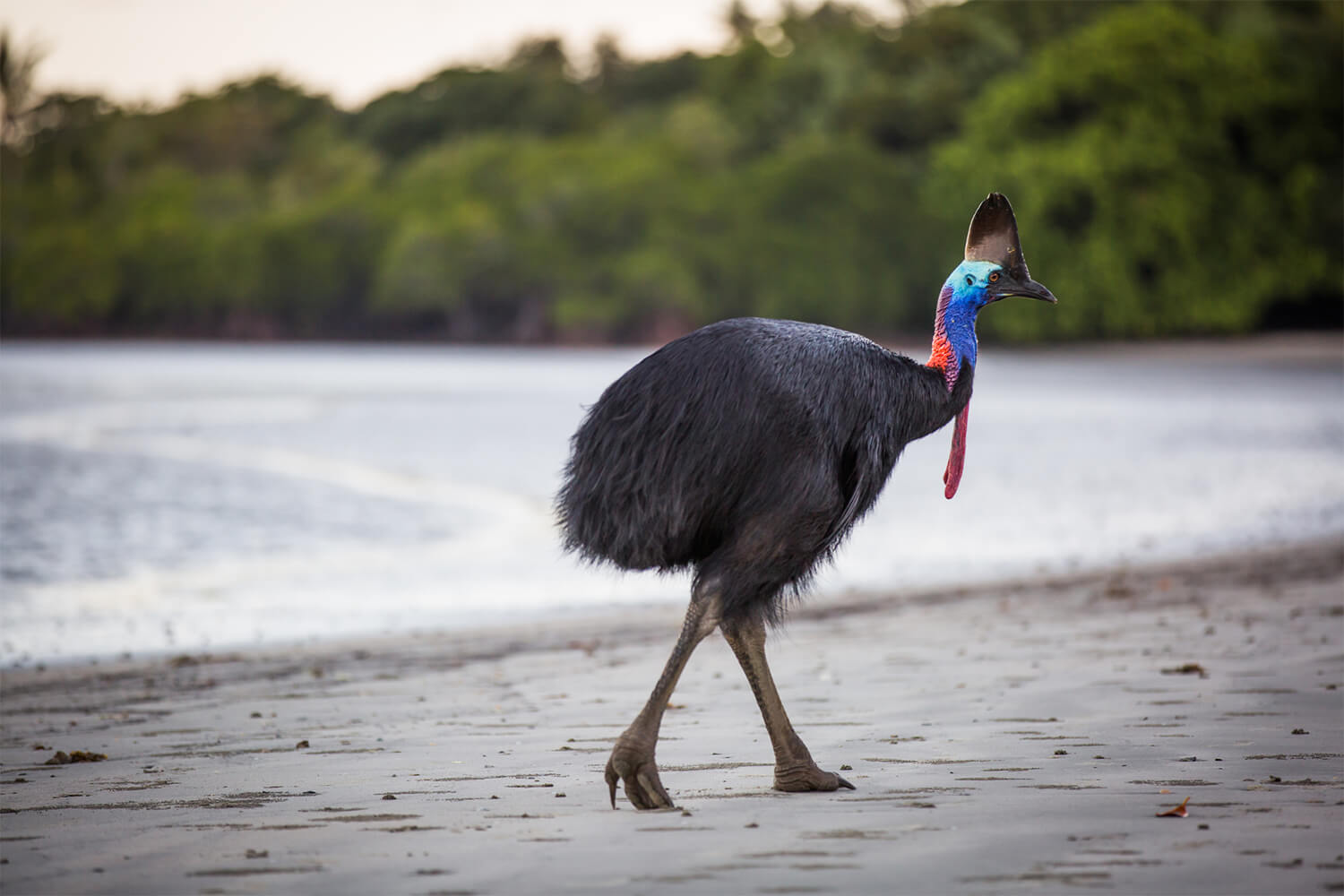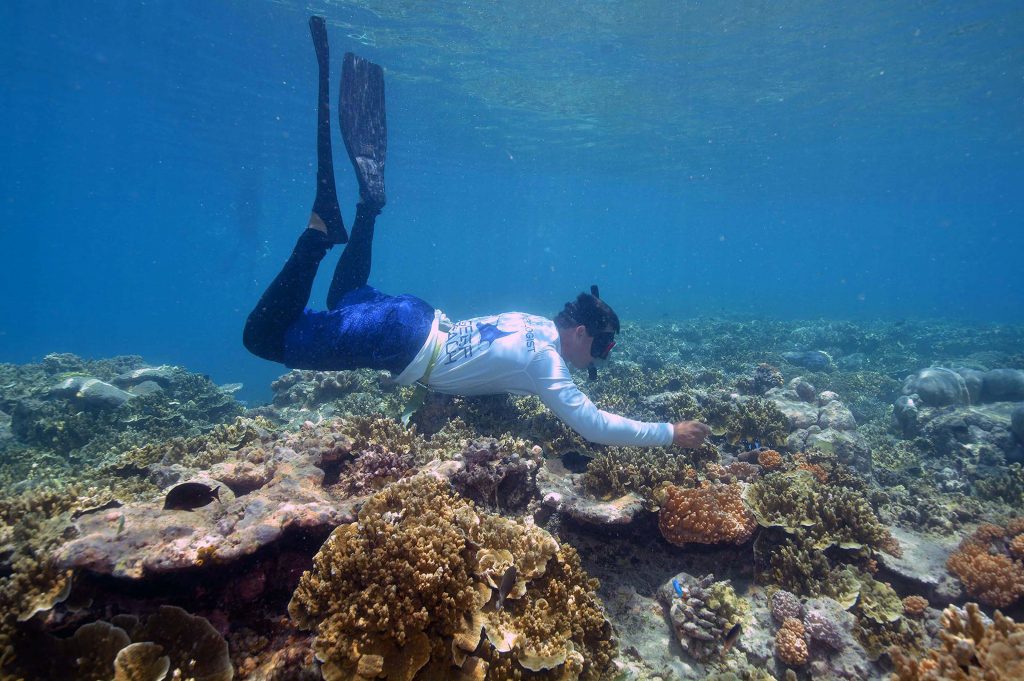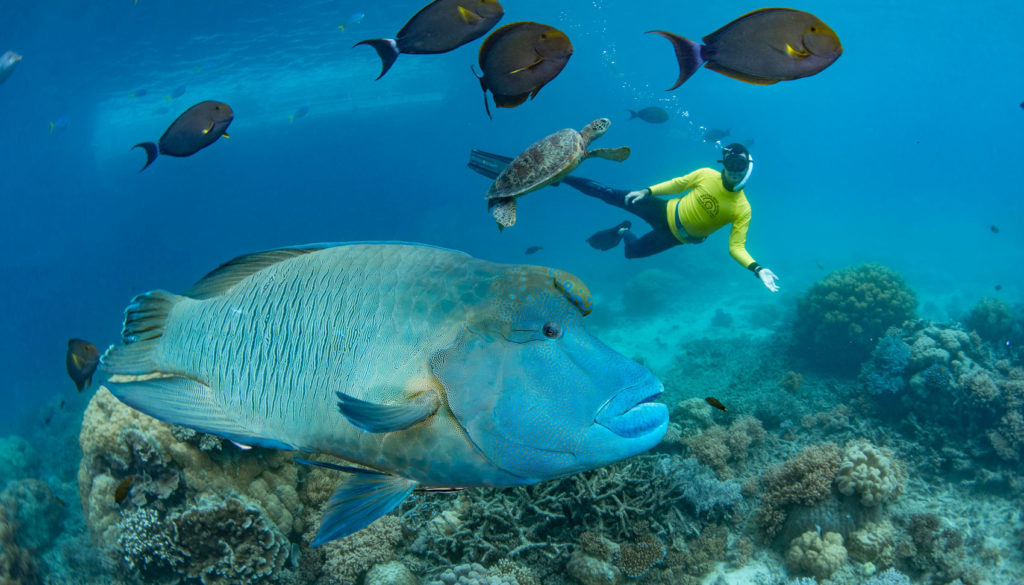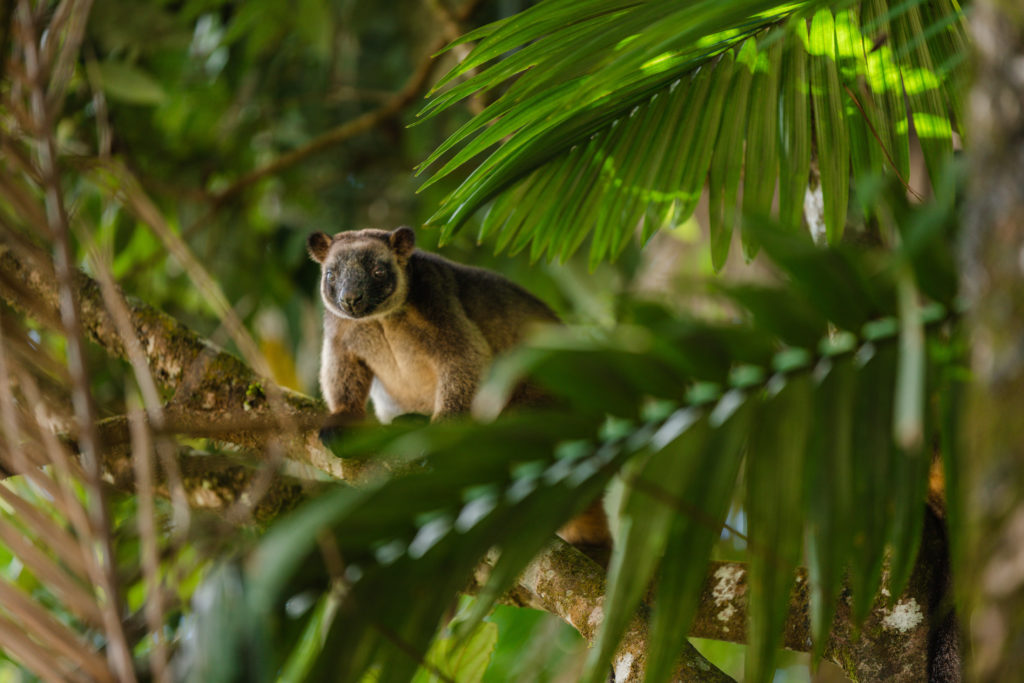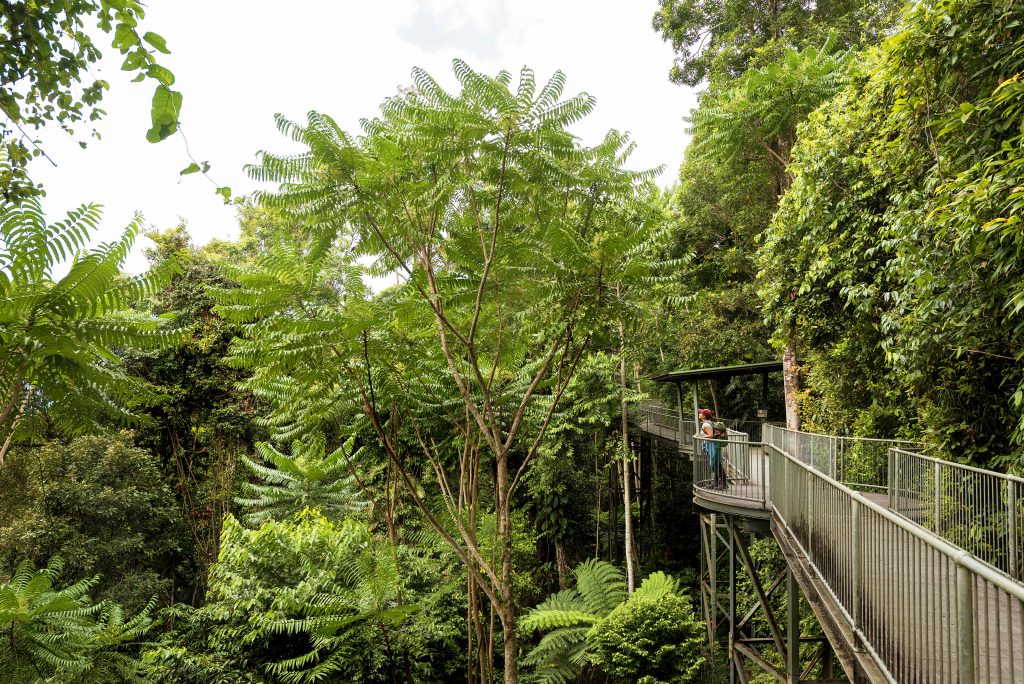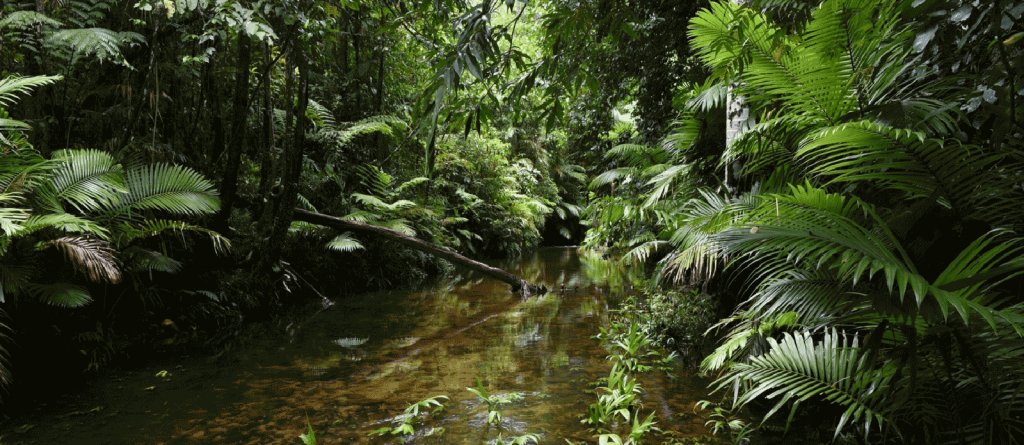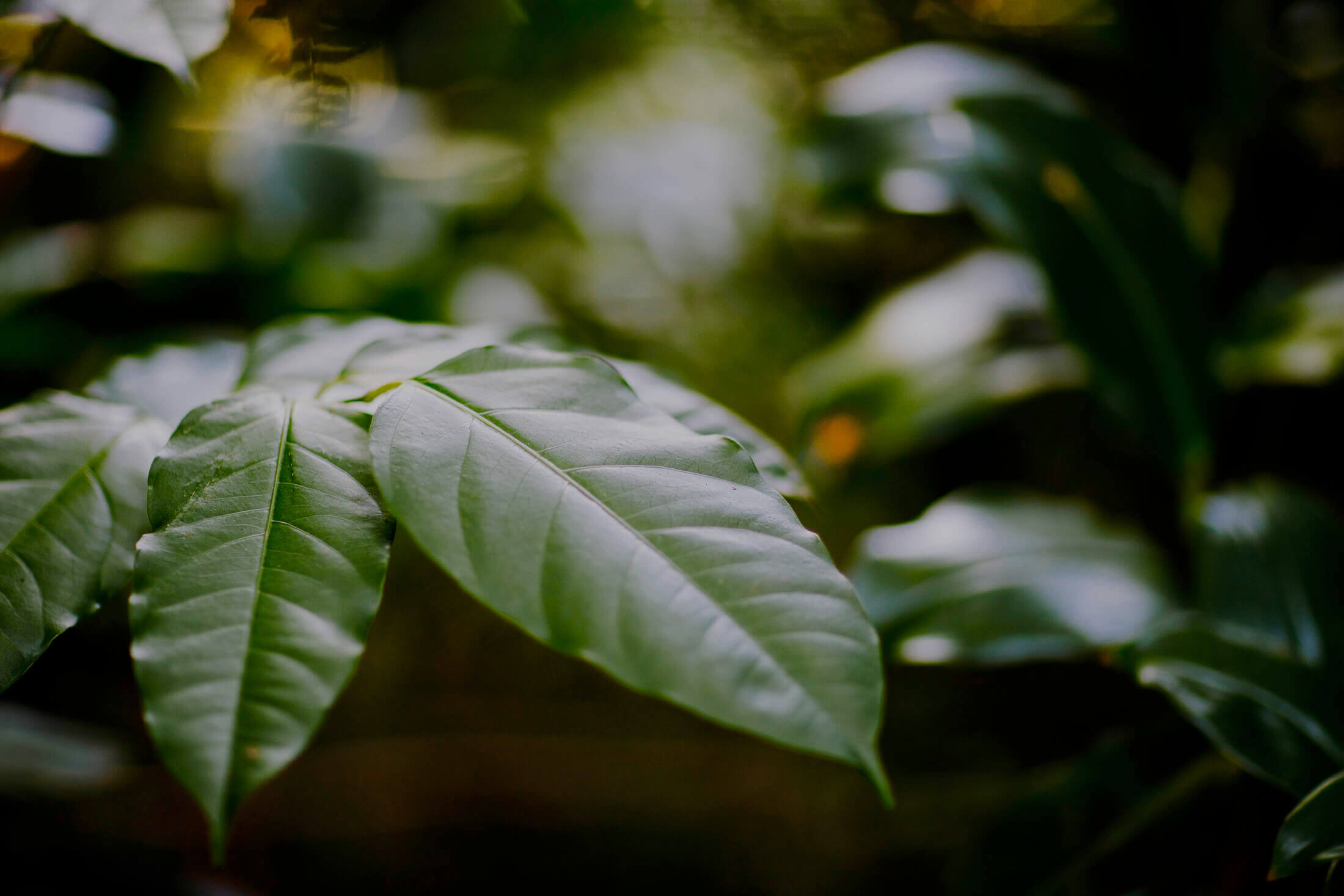TNQ Writer
Meet six solitary inhabitants of the Great Barrier Reef & Wet Tropics Rainforest who were practising social distancing before toilet paper was a commodity & TikTok challenges overtook your newsfeed.
Boyd’s Forest Dragon
How to spot a Boyd's Forest Dragon in the wild by FNQ Nature Tours
Boyd’s Forest Dragons are solitary creatures and they would like to keep it that way thank you very much. They spend most of their time hanging out on tree trunks – to the untrained eye, they can be difficult to spot due to their colouring and texture despite generally being at eye level – and will move around the trunk to keep away from harassers. You’ll find them (well, maybe) throughout the Wet Tropics Rainforest of which they are endemic.
While these dragons may be non-fictional, unlike their ferocious firebreathing namesake, they are unusual in that they allow their body temperature to fluctuate with the weather and don’t bask in the sun, making them thermoconformers rather than thermoregulators like most other lizards.
Where to spot in the wild: Mossman Gorge, Lake Eacham & Lake Barrine, Daintree National Park, Malanda Falls Conservation Park
Didn’t find one? Head to: Wildlife Habitat, Cairns Aquarium, Rainforestation
Southern Cassowary
Father cassowary with chick
Perhaps the longevity of this bird can be credited to its solitary lifestyle? Or perhaps not, but they’ve inhabited the rainforests of Tropical North Queensland for a very long time. Evolving millions of years ago, they are one of the world’s closest living relatives to dinosaurs, with sharp claws on their feet just like their Dromaeosaurids cousins. While dangerous in reputation, they will typically leave you alone if you keep your distance, preferring their own company to that of the strange featherless creatures with opposable thumbs.
Danger aside, these giant birds play a critical role in the biodiversity of the Wet Tropics Rainforests, responsible for germinating over 70 species of plants. Throughout the warmer and wetter months, you may question their loner status as fathers with chicks roam extensively for food throughout the peak fruiting season. Fathers are particularly protective during this time so if you do encounter a family in the wild, maintain a safe distance and be “cass-o-wary” when exploring their habitat.
Where to spot in the wild: Mission Beach & Cassowary Coast, Daintree & Cape Tribulation, Kuranda, Etty Bay
Didn’t find one? Head to: Rainforestation, Wildlife Habitat, Birdworld Kuranda, Hartley’s Crocodile Adventures
Lumholtz’s & Bennett’s Tree Kangaroos
Lumholtz's Tree Kangaroo by FNQ Nature Tours
Is it a possum? Is it a monkey? No, it’s a climbing kangaroo! Tropical North Queensland is home to Australia’s only two species of tree kangaroos; the Lumholtz’s, which can be found around the higher altitudes on the Atherton Tablelands; and the Bennett’s, found in the northernmost parts of the Wet Tropics World Heritage Area including the Daintree Rainforest and towards Cooktown.
Tree kangaroos are notoriously elusive and difficult to spot, even more so because of their solitary nature. Males are known to be aggressive to others entering their territory but as they hang out in the canopy and are most active at night you’ll count yourself lucky if you even spot one in the wild. Whilst they can move their hind limbs independently unlike terrestrial ‘roos, when startled, they jump to the forest floor and bound off in a similar matter.
Where to spot in the wild: Rainforest areas on the Atherton Tablelands, Nerada Tea plantation who are well-known for their resident Lumholtz’s tree kangaroos
Didn’t find one? Head to: Rainforestation, Wildlife Habitat
Daintree River Ringtail Possum
How “handy” would it be to have an extra limb sometimes? Well that’s what it essentially means to be a ringtail possum; they use their prehensile tail as a fifth limb curling it up into a little ring when it’s not in use. The Daintree River Ringtail Possum, or cinereus ringtail possum, is the most northern species of ringtail inhabiting the small area of cool wet upland rainforests above 450m of Mount Windsor Tableland, Carbine Tableland and McDowall Ranges which lie adjacent to and within the Daintree National Park.
Closely related to the Herbert River Ringtail, they were only separated as different species in 1989. These smaller ringtails, at a length of about 35cm, are only ever seen in pairs before mating or with young which mothers carry on their back. Introversion aside, they do communicate with others by leaving faeces at points or by rubbing objects with a gland on their sternum to leave a scent. Clearly, the great 2020 toilet paper fiasco doesn’t bother them.
Where to spot in the wild: Mount Windsor Tableland, Carbine Tableland and McDowall Ranges. As they are nocturnal and arboreal, the best way to find them is to look for their eyeshine with a spotlight in the canopy.
Manta Ray
Manta Rays off Fitzroy Island
If you’ve ever had the privilege of swimming with manta rays, you’ll know their gracefulness is akin to a ballerina. They glide through the water effortlessly despite their giant size – with a wingspan of up to seven metres and weighing up to two tonnes – and they can swim up to 24 kilometres per hour. Perhaps as striking as their size is the intricate patterns you can glimpse as they swim or tumble by; what you might think is a ribcage on display is a complex system of traps, filters and gill combs.
Typically mantas travel alone (#solotravel), though often congregate at cleaning stations on reefs – where small fish and organisms consume parasites and dead skin from the body – in plankton-rich areas and of course during courtship or mating. With the largest brain relative to their body size of all fish, perhaps they’d already cottoned on to the benefits of social distancing long before humans did.
Reef Octopus
Reef Octopus spotted at Frankland Islands
Reef Octopuses or Big Blue Octopuses live a whirlwind of a life with both males and females dying not long after reaching sexual maturity, on average between 12 to 15 months. Females essentially starve themselves to death while protecting their eggs, dying around 60 days after spawning – about 10 days after the last eggs hatch. Males die once their specialised suckers reach full-size between 13 to 15 months as they stop eating, lose weight and the ability to change colour.
These fascinating creatures spend their lives moving between coral dens or lairs within crevices or coral rubble only interacting with others of their species during reproduction. They’re also masters in disguise which could just be a clever ploy to catch some “me-time” without anyone disturbing them.
While they don’t necessarily have a bad bone in their body (they don’t have bones at all!), they can be very aggressive hunters and even cannibalise smaller octopi. They’re also one of the only octopus species that predominately hunt during the day rather than night.

